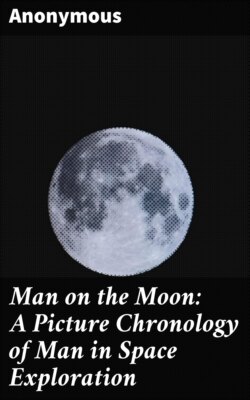Читать книгу Man on the Moon: A Picture Chronology of Man in Space Exploration - Anonymous - Страница 5
На сайте Литреса книга снята с продажи.
ОглавлениеWHY GO TO THE MOON?
Table of Contents
A manned lunar landing was chosen as a United States goal because it would require extensive research and development in almost every branch of science and technology, pushing back the frontiers of knowledge in these various fields. New materials and components had to be developed to function in the extreme cold and the extremely low pressures of outer space and at the extremely hot temperatures attained in rocket combustion chambers and on the outer surface of bodies reentering the atmosphere at high speed.
GEMINI IV ASTRONAUT EDWARD H. WHITE II WALKS IN SPACE
June 4, 1965
New developments would have to be achieved in propulsion, in electronics, in communications, in guidance and control techniques, and in computer techniques in order to accomplish the task. New information would have to be acquired in the life sciences, including information on the effects of the radiations encountered in outer space, the effects of long periods of weightlessness, and long exposure to a completely closed environment.
This new knowledge and experience in the space sciences and technologies would provide a sound basis for applying other new-found knowledge to the design of space vehicles for a variety of purposes such as space vehicles for scientific research, for communications systems, for meteorological observation, and for other potential applications.
Important was the fact that the developments in science and technology are transferable to other applications in an industrial society. The United States had repeated evidence in the history of the development of the automobile, the airplane, and the nuclear reactor of the transferability of developments in these fields to other industrial applications.
It was felt that development of space science and technologies needed in achieving the difficult goal of landing a man on the moon and returning him to earth would strengthen the entire industrial base and serve as insurance against technological obsolescence. The discipline of cooperation in a great effort could be the instrument of great social gain. Education would profit, and the money required in the effort would be spent in factories, workshops, and laboratories for salaries, for new materials, and new supplies, which in turn represent income to others.
The manned moon landing was chosen as a goal because no place other than the moon is so near in space for testing the equipment and the men for future space travel. The moon would be an excellent platform for mounting astronomical instruments, without atmospheric handicaps, and would be a relay point for communications and a refueling point for space travels.
It was felt that such a clear objective would give impetus, order, and efficiency to the space program.
